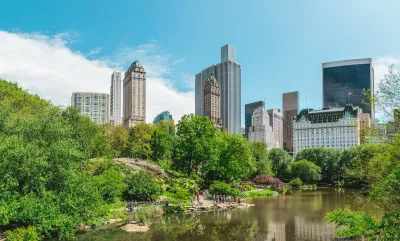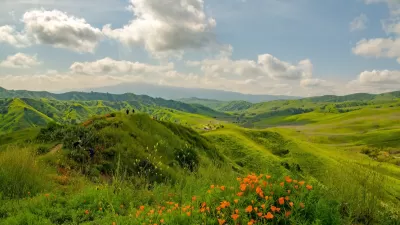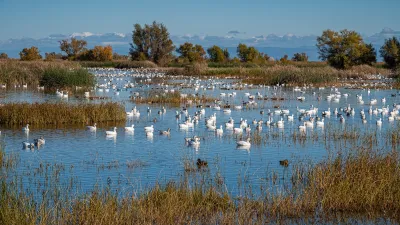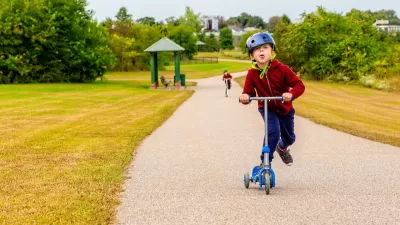Designed with green infrastructure, parks can mitigate flooding, reduce urban heat, and enhance climate resilience, offering cost-effective solutions to environmental challenges while benefiting communities.

Parks are widely cherished public spaces that bring communities together, but they can also serve as powerful tools for climate resilience when designed with green infrastructure in mind. While climate change remains politically divisive, the impacts of extreme weather—flooding, heat, and drought—are universally recognized. This has created an opportunity for bipartisan support of initiatives that expand and enhance public parks, as demonstrated by the widespread success of state and local ballot measures and federal legislation like the EXPLORE Act. As reported by Claire Elise Thompson, parks designed to mitigate climate risks not only provide recreational and social benefits but also strengthen communities against environmental challenges in a cost-effective way.
Green infrastructure, which mimics natural systems to manage water and heat, is an increasingly common feature in park design. In Atlanta, Rodney Cook Sr. Park was developed on a flood-prone site in Vine City to absorb excess stormwater and prevent surrounding neighborhoods from experiencing devastating floods. Similarly, Historic Fourth Ward Park features a retention basin that protects nearby communities while serving as a scenic public space. These parks exemplify how integrating flood management, shade trees, and water features into urban landscapes can enhance climate resilience while improving quality of life. Other cities, including Seattle and Boston, are adopting similar approaches, incorporating rain gardens, permeable surfaces, and cooling elements into their parks.
Despite its clear benefits, green infrastructure is not yet a universal practice in urban planning. Many cities still default to costly, traditional engineering solutions like underground pipes and cisterns, overlooking the added social, environmental, and economic advantages of nature-based approaches. However, as projects like Cook Park and Historic Fourth Ward Park demonstrate, green infrastructure can be a more cost-effective alternative while providing accessible recreational spaces. As extreme weather events become more frequent and severe, investing in parks as climate solutions offers a pragmatic and widely supported way to build more resilient communities.
FULL STORY: Climate change is politically divisive. Public parks? Not so much.

Study: Maui’s Plan to Convert Vacation Rentals to Long-Term Housing Could Cause Nearly $1 Billion Economic Loss
The plan would reduce visitor accommodation by 25,% resulting in 1,900 jobs lost.

North Texas Transit Leaders Tout Benefits of TOD for Growing Region
At a summit focused on transit-oriented development, policymakers discussed how North Texas’ expanded light rail system can serve as a tool for economic growth.

Why Should We Subsidize Public Transportation?
Many public transit agencies face financial stress due to rising costs, declining fare revenue, and declining subsidies. Transit advocates must provide a strong business case for increasing public transit funding.

How to Make US Trains Faster
Changes to boarding platforms and a switch to electric trains could improve U.S. passenger rail service without the added cost of high-speed rail.

Columbia’s Revitalized ‘Loop’ Is a Hub for Local Entrepreneurs
A focus on small businesses is helping a commercial corridor in Columbia, Missouri thrive.

Invasive Insect Threatens Minnesota’s Ash Forests
The Emerald Ash Borer is a rapidly spreading invasive pest threatening Minnesota’s ash trees, and homeowners are encouraged to plant diverse replacement species, avoid moving ash firewood, and monitor for signs of infestation.
Urban Design for Planners 1: Software Tools
This six-course series explores essential urban design concepts using open source software and equips planners with the tools they need to participate fully in the urban design process.
Planning for Universal Design
Learn the tools for implementing Universal Design in planning regulations.
City of Santa Clarita
Ascent Environmental
Institute for Housing and Urban Development Studies (IHS)
City of Grandview
Harvard GSD Executive Education
Toledo-Lucas County Plan Commissions
Salt Lake City
NYU Wagner Graduate School of Public Service





























